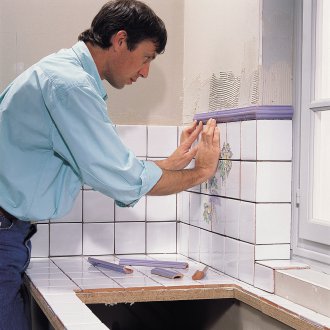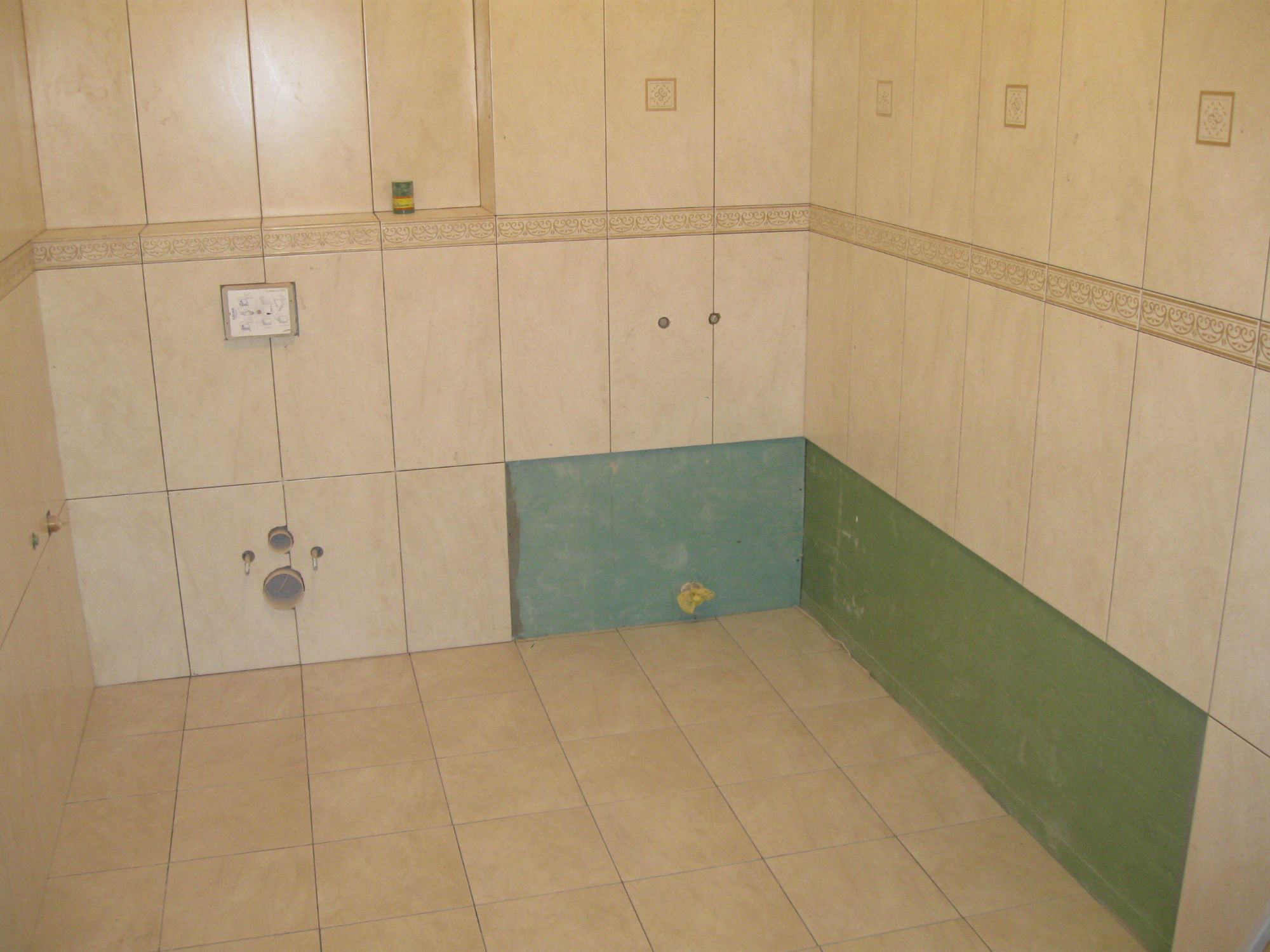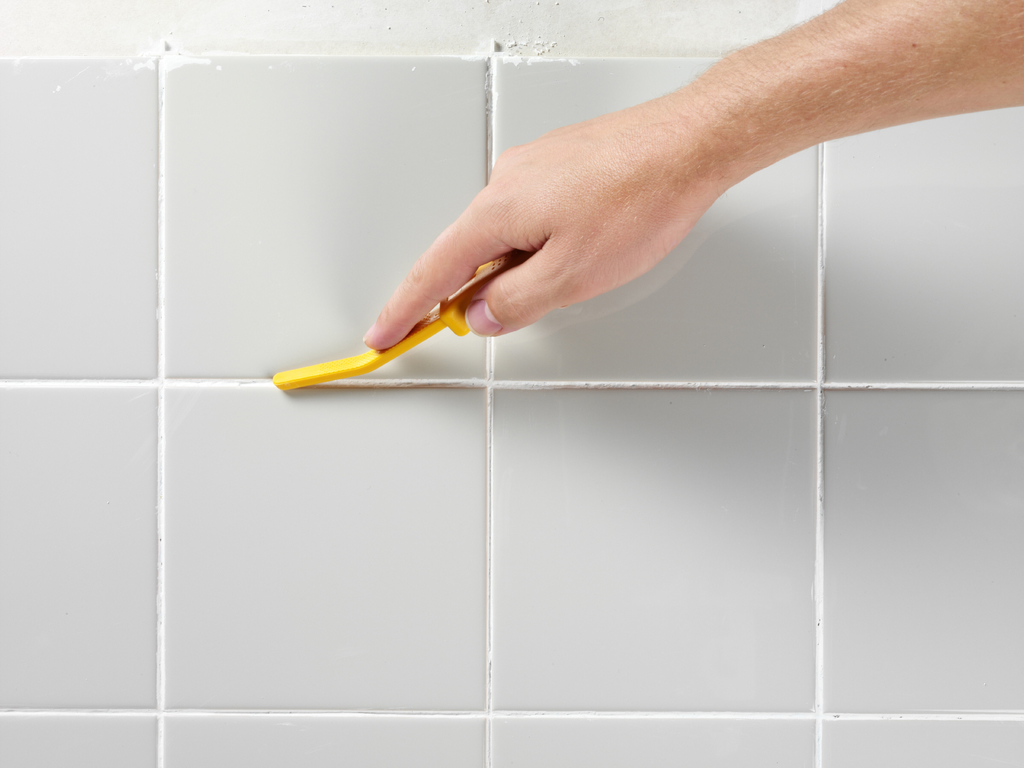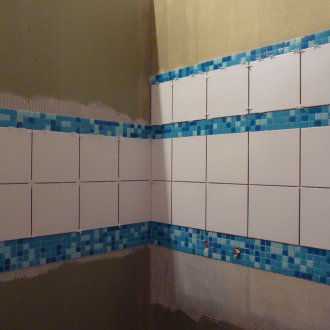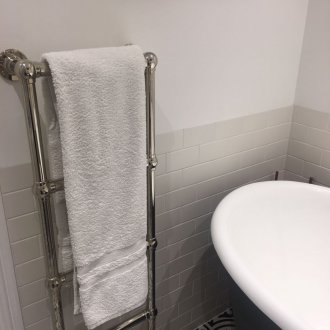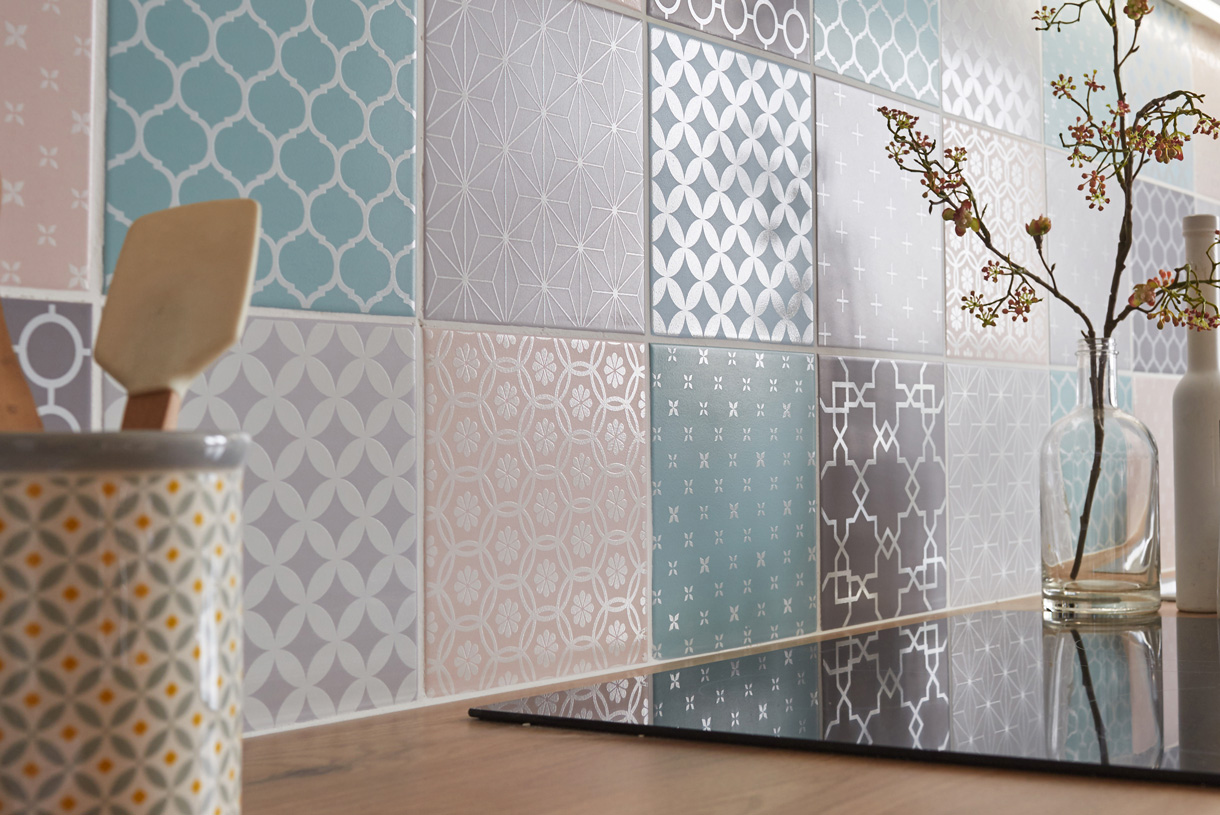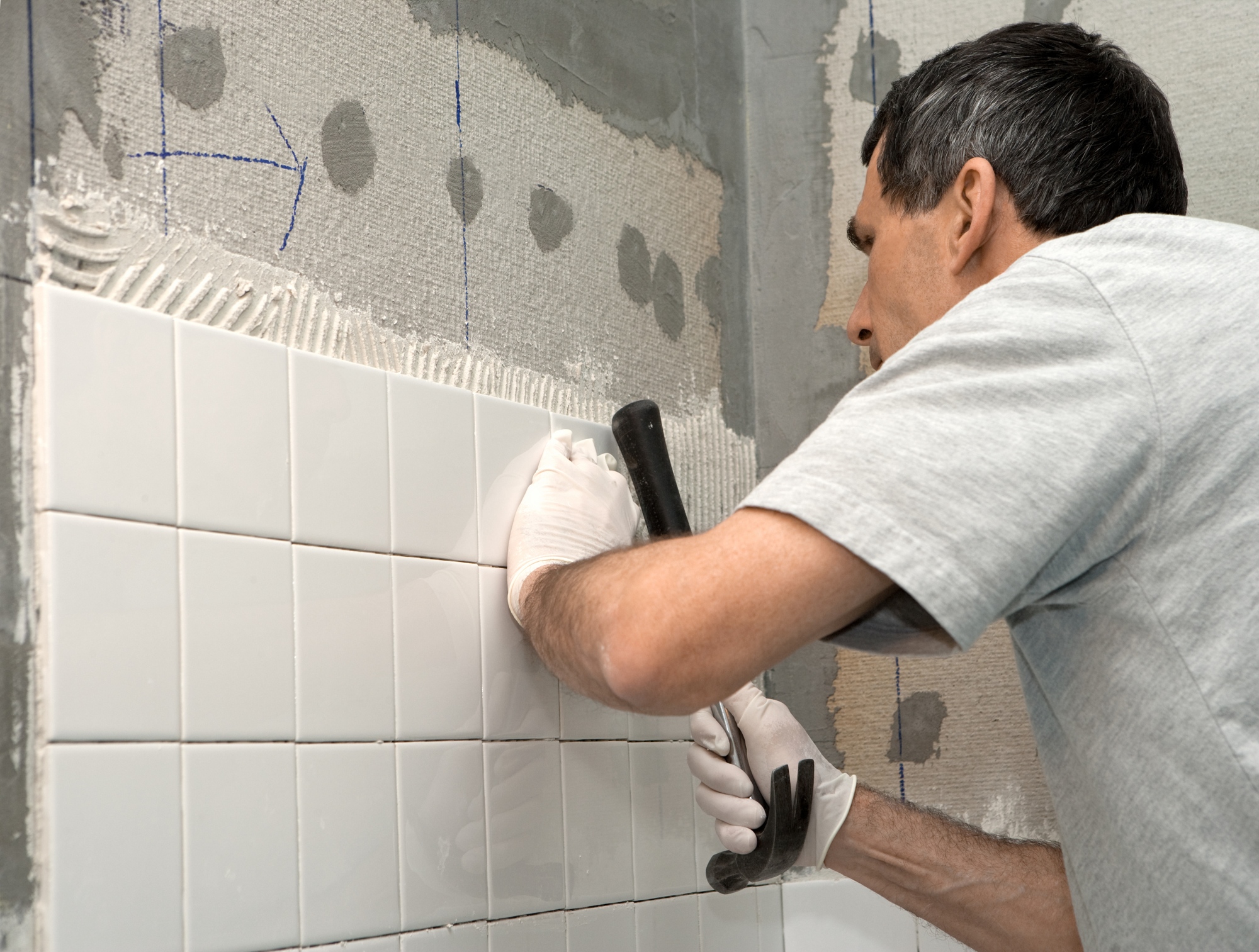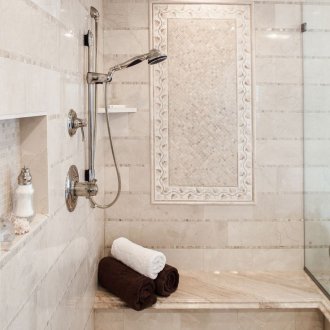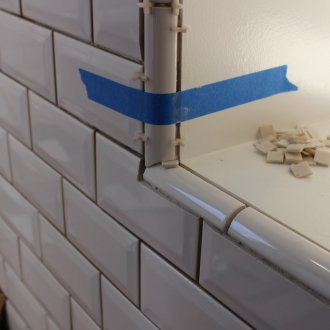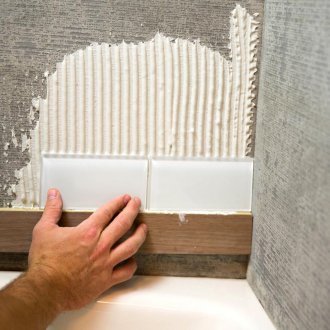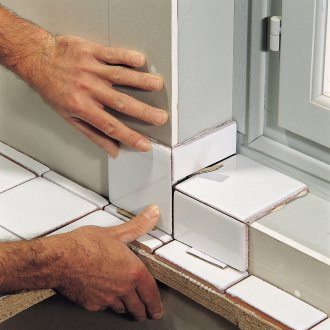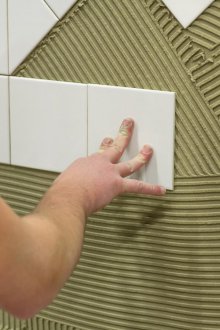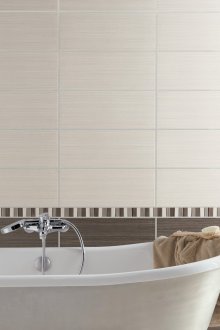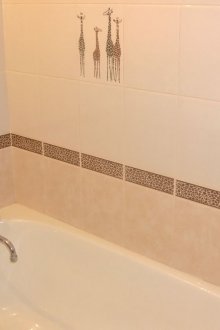How to lay tiles on drywall: professionals advise
Content
The widespread use of drywall is justified by the ease of use and the variety of subsequent finishes. The material can serve as the basis for the installation of partitions, slopes, and is also used to level the treated area. Often the question arises of the use of such sheets in tiling. With the advent of modern materials with moisture resistance, this has become possible, because the tile usually serves to create the interior of a bathroom, toilet, kitchen, where humidity indicators are high. Using drywall, you can perfectly prepare the surface for finishing. Subsequent laying of tiles on drywall does not require any complex operations.
Features of application of hl together with a tile
Tile elements are placed only on a flat platform to ensure the strength of the structure and give the finish a beautiful look. A few years ago, before laying the tiles, a gypsum composition or cement-sand plaster was applied. However, this method of roughing combined the high costs in the case of an uneven wall and a long processing time. Later, many masters began to use drywall under the tiles instead of the finishing composition of gypsum.
When ceramic tiles are laid on drywall, there is no dirt and dust. And also it is not necessary to wait for the solution to dry, which speeds up the finishing process. However, before answering the question of how to lay tiles on drywall, you need to choose the appropriate type of material.
Types of Drywall
How to choose the source material for the finish? The following types of drywall material are known:
- GKL - standard sheets that do not have distinctive characteristics. Find application in the arrangement of partitions, alignment of walls in rooms. They have a white or gray color.
- GVL - moisture resistant sheets, which allows it to be used in humid conditions, when the humidity parameters do not change.
- GVLV - the material is supplemented with hydrophobic impregnation, which affects the resistance of the material to high humidity. At the same time, humidity indicators can be unstable. Sheets are used in the repair of showers, bathrooms, kitchens, terraces. The outer cardboard is made in green.
- GKLO - material with characteristics of resistance to fire. It is used in the arrangement of saunas, in a bathhouse, where there is a high level of fire hazard. The sheets are pink in color.
Drywall tile in the bathroom or other room where high humidity is possible is mounted on moisture-proof sheets.
Advantages and disadvantages of technology
Tiling gypsum plasterboard is a method that is often used in practice. This is due to the many advantages of drywall:
- Universal material used in various types of finishes;
- The material is easy to process;
- You can lay the whole sheet on the wall or cut into sections of the required size;
- Sheathing can be done with one's own hands;
- No harmful chemical compounds are present in the material.
By choosing technology for laying tiles on drywall, you reduce repair time and reduce the complexity of the finishing process.
Minus material is the likelihood of warpage of the sheets. This can be avoided by laying it on certain rails or using a grid for plastering.
Surface preparation
To begin the process of facing, it is first necessary to decide on the method of fastening sheets to the wall. You can do this using the wireframe method or stick them to the wall. For the frame, it is better to use a metal profile, which is fixed with a gap of 40 cm. If you want to glue moisture-proof drywall to the surface, then you must first align the existing depressions.
In the presence of the old cladding, the question arises of choosing a method of fastening sheets. If there is an old tile on the treated surface, then gluing moisture-proof drywall to the wall will not succeed, therefore, we make the frame. Initially, you need to remove the damaged tile. The rule is known that if more than 40% of the coverage area is damaged, then the entire tile must be removed.
If the old cladding was done using paint or regular plaster, then you can simply remove this layer. When choosing the method of gluing sheets on the walls in the bathroom, it is necessary to plaster the surface, aligning certain areas. Frame technology involves the application of an antiseptic primer.
After fixing the material, it is necessary to process the surface of the sheets in order to subsequently glue the tile on drywall with your own hands.
Drywall Processing Steps
How to glue tiles on drywall, if it is already fixed. First a primer is carried out, but first you can install a reinforced strip in the joints, if the humidity is very high.
It is necessary to treat with this composition, as the fibers of the material are strengthened, moisture absorption is reduced, and the appearance of mold is excluded. Primer should be with a solvent-free formulation. The mixture is applied in two layers.
The next stage, when preparing drywall for tiles, begins after the soil has dried. Now you need to putty the sheets in the bathroom with your own hands. Do you have to putty before laying tiles on drywall in the bathroom? This question is asked by many who lay ordinary tiles. Puttying the entire surface is in those cases when you need to apply a reliable coating to the box. This usually happens in situations of using massive tile on drywall.
In other cases, before putting the tile on drywall, you need to putty the joints and areas where the screws are screwed.
The final stage of sheet preparation is the priming of the putty layer. This is necessary to enhance adhesion. In this case, gluing ceramics in a bathroom or other room is much easier. After priming, you need to align the prepared hl-surface from irregularities resulting from the application of the primer.
The choice of adhesive
Facing with ceramic tiles involves the use of an adhesive. Installation of tile material is carried out on liquid nails or glue. If you stick the tile on liquid nails, you will get a solid structure due to the high adhesion of the composition, but the tool has a high price.
Tile adhesive can be of two types:
- Cement based;
- Elastic.
It is not advisable to glue ceramic tiles on drywall using cement glue in the toilet or in the bathroom, as it is exposed to water. The elastic composition is a dry powder that is diluted in water. It is necessary to choose the composition for internal work.
Tile fastening
After answering the question “how to align the wall?” Another question arises - how to glue the tiles on drywall. First, the installation method is determined - with or without seams. The principles of fixation:
- Prepare all tools and material.
- Work begins at the bottom in the most prominent corner or on a vertical axial strip in the center of the wall.In the second case, the extreme details look symmetrical.
- Using the level, markup is done.
- Glue is applied to the drywall surface using a notched trowel. Do not use a thick layer of glue, as the load on the material increases.
- They need to be lined so that the part is pressed tightly against the wall with your hands.
- Remove glue residue with a damp cloth.
- In order to obtain beautiful high-quality seams, plastic crosses are used.
- Stacked tiles are cut with a tile cutter.
- After mounting five rows, a break is made to adapt the material to the load.
- Correct installation is checked by level.
- After the adhesive has completely dried, grout the joints.
There is no need to rush in the process of facing. You should achieve even styling, because then the room will look aesthetically pleasing. Many are interested in whether it is possible to glue tiles on the floor, if it is trimmed with drywall. In this case, floor operations are performed in the same manner.
Sometimes situations arise that it is necessary to delete some details. The question arises as to how to remove tiles from drywall. It is impossible to do this accurately without damaging the drywall. You can put a spatula under the tile, drywall as a result of prying will not be damaged if the size of the parts does not exceed 100 sq. Cm. If the size of the tile is large, you can try to make a section of the site together with plasterboard material. Then make a patch and install it.
Applying plasterboard sheets, you can make a wonderful base for the tile. Work on installing the frame or gluing tiles does not require special skills and knowledge. Performing all the steps of the cladding efficiently, you can end up with a beautiful interior and enjoy your own work.

